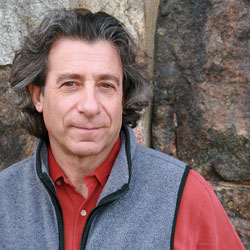Inside Yankee: Looking Back, Looking Ahead
I came to Yankee 31 years ago this October, and even then the magazine was so ingrained in the life and culture of the region that it was hard at times to know whether New England was shaping Yankee or whether the magazine was somehow defining how people saw New England–probably a bit of both. […]

Yankee Editor Mel Allen
I came to Yankee 31 years ago this October, and even then the magazine was so ingrained in the life and culture of the region that it was hard at times to know whether New England was shaping Yankee or whether the magazine was somehow defining how people saw New England–probably a bit of both. I was here for Yankee‘s 50th anniversary, and I know that this one, the 75th, will be the last big one for me. Someone else will write this page when Yankee‘s 100th anniversary rolls around, and the magazine then will come to readers through devices we can’t even imagine today. What I do know is that the reason Robb Sagendorph began Yankee in 1935–with one typewriter, and a Franklin stove beside his desk–won’t change, no matter how many anniversaries we celebrate.
He knew that in a country undergoing profound societal change, people would be hungry for and drawn to place, and that no place in America possessed such a sense of tradition and continuity–a place with an identity so strong that no matter where you were, if you said “I’m a New Englander,” people would have a sense of who you were. That was what he wanted to capture: in words and photographs, the feel and mood and character of this special place, so connected to the nation’s roots that in a sense every American belonged to it, or wanted to. Or needed to.
Today, new magazines are launched to appeal to a market, and to the advertisers who want to reach that market. Sagendorph was after something bigger. He saw a way of life he loved fighting to hang on. He saw values under fire. He saw the idiosyncratic Yankee in danger of becoming everyman. So he created something unique: a magazine that held the voices of a region within its bound pages. And as New England changed and evolved, so too did the magazine; the voices may be different today, but they still come from the same place.
And here’s what won’t change by the time someone writes an introduction to the 100th anniversary issue. People will yearn for solitude, for sunrise over water and the haunting howl of a wild creature; they’ll want to raise a family where kids belong not to some sprawling stretch of asphalt but to neighborhoods with roots. And in 2035, New England will still be the most distinct, most compact region in the country, with a sense of history that surrounds you every time you stroll past the homes of people who lived when the nation was still raw. This issue is our roadmap to the fun and pride we feel about belonging to New England. Enjoy the trip.
Mel Allen
Mel Allen is the fifth editor of Yankee Magazine since its beginning in 1935. His first byline in Yankee appeared in 1977 and he joined the staff in 1979 as a senior editor. Eventually he became executive editor and in the summer of 2006 became editor. During his career he has edited and written for every section of the magazine, including home, food, and travel, while his pursuit of long form story telling has always been vital to his mission as well. He has raced a sled dog team, crawled into the dens of black bears, fished with the legendary Ted Williams, profiled astronaut Alan Shephard, and stood beneath a battleship before it was launched. He also once helped author Stephen King round up his pigs for market, but that story is for another day. Mel taught fourth grade in Maine for three years and believes that his education as a writer began when he had to hold the attention of 29 children through months of Maine winters. He learned you had to grab their attention and hold it. After 12 years teaching magazine writing at the University of Massachusetts-Amherst, he now teaches in the MFA creative nonfiction program at Bay Path University in Longmeadow, Massachusetts. Like all editors, his greatest joy is finding new talent and bringing their work to light.
More by Mel Allen

